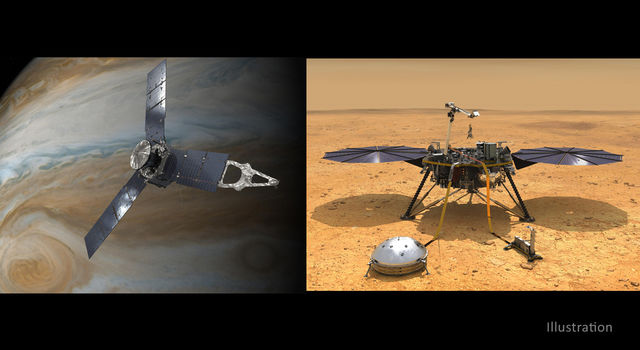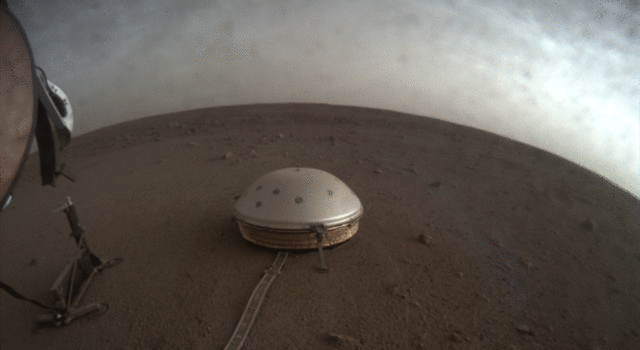Blogs | Dawn Journal | March 29, 2009
March 29, 2009
Dear Dawntpanics,
Dawn continues to coast quietly and calmly in its orbit around the Sun, keeping its main antenna pointed to faraway Earth. The mission control team has given the spacecraft relatively few assignments in recent weeks, providing time to prepare for a busier future. To ensure the distant craft remains healthy and safe, operators transmitted instructions for conducting routine maintenance, activities that are familiar to the probe now that it has been on its deep-space journey for more than 1.5 years. Perhaps what is most noteworthy and satisfying since the last log is not what Dawn did, but rather what it did not do.
At some unknown time in the past, at some unknown location in space, under specific conditions and processes we can only speculate about (albeit under the influence of physical laws that are well understood), a high energy particle embarked on its own deep-space journey. On March 21 at 1:32 am PDT, its path and Dawn’s intersected. The particle penetrated the spacecraft and reached an electronics unit inside. The energy that had been given to it elsewhere in time and space was transferred then and there to a miniature electronic component in a circuit within that unit.
The circumstances of this event were very much like those that occurred on January 14, 2008. As a reminder for the reader who has not memorized the log describing that incident (you know who you are, and we do as well, but your secret remains safe under the terms of our readers privacy agreement), the chain of events led to the spacecraft entering “safe mode.”
While safe mode is the desired response to a wide range of unexpected or problematic conditions, Dawn’s engineers recognized that it was not necessary when space radiation hit that particular device. They reexamined the extensive analyses that had been conducted before launch and performed new studies as well, concluding that the mission could be interrupted by more such events because of the susceptibility of the component that was hit by the radiation. It was not possible to establish with high confidence how frequently it could occur (much less to know specifically when it would occur), but the data suggested that it might happen often enough that it would hamper the mission, interfering with too many activities and ultimately consuming too much of mission controllers’ limited time.
The team, therefore, formulated a change to the software in one of the spacecraft’s auxiliary computers that would allow it to accommodate another radiation hit without the subsequent cascade of events culminating in safe mode. While changing the software is challenging and time consuming, the project chose to undertake the work to avoid a repeat of the incident, judging the certain cost of the change to be less expensive to Dawn's mission than the possible cost of subsequent incidents.
On July 22, 2008, the new software (along with all the instructions to patch it in) was radioed to the remote spacecraft. Since then, it has been available should a radiation strike energize the component as it had 6 months earlier.
The modified part of the software had its first use in flight with the radiation impact on March 21, when nature repeated itself. The electronics were unchanged, of course, so the circuit responded the same way it had 14 months earlier, informing the software of a problem. This time though, the software responded simply by storing a short message to transmit along with all the other spacecraft health and status information during the next scheduled contact with Earth (by coincidence, later that day). The unnecessarily dramatic activation of safe mode is no longer part of the outcome, thus allowing the robotic probe and its human support team to continue their work without interruption or distraction.
While Dawn happened to be quiescent when this radiation impact occurred, it might not have been, given the inherent unpredictability of the timing. It might not be when the next uninvited particle strikes the same component. Now, with the clear demonstration of the effectiveness of the software patch, it won’t matter. Controllers were gratified to receive the message on March 21 reporting the spacecraft's nonchalant response to the radiation, validating their decision to modify the software last year.
The spacecraft will be busier in the coming weeks than it has been since it was deflected by Mars last month. The next log, already available for readers in the future [Note to those readers: please send a copy to the author in his present to save him the time of writing it], will cover some of the upcoming special activities and will recognize another milestone (if not million-milestone) on this journey of scientific discovery and adventure to distant and unexplored worlds.
Dawn is 327 million kilometers (203 million miles) from Earth, or 875 times as far as the moon and 2.19 times as far as the Sun. Radio signals, traveling at the universal limit of the speed of light, take 36 minutes to make the round trip.
Dr. Marc D. Rayman
7:00 am PDT March 29, 2009
TAGS:DAWN, VESTA, CERES, DWARF PLANET, MISSION, SPACECRAFT







